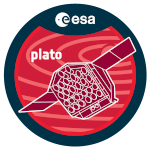Thanks to the improvement of astronomical observations and the recent massive surveys, we now have a huge amount of accurate data that we can explore and use for building new tools. Based on this, we present state of the art machine learning (ML) models which are able to predict stellar parameters like mass, radius, or age with unprecedented robustness, being these our particular study targets. The main goal of this work is to remark the importance of switching from classical ML predictors to probabilistic ones and show their advantages for research.
With classical ML approaches, such as linear regressions, random forest, or Neural Networks, for example, it is possible to get close predictions to target values based on optimized metrics, but this doesn't mean they truly reflect the nature of the data or that they are accurate. Stochastic models, on the other hand, let us get distributions of the possible values our predictions could have, which in many cases could be more convenient and realistic. For doing so, we have used statistically hierarchical architectures with several layers which let us learn from the input data and use that information for feeding posterior levels of the model, maximizing what we know about our dataset. Thanks to these kinds of architectures it is possible to consider the observational errors (which could be regarded as a random distribution), in combination with the bayesian nature of output level we are able to characterize the inner parameters of the ML models, achieving a better propagation of the errors and uncertainty treatment.
In our case, the training set used for mass and radius prediction comes from highly accurate measurements obtained using asteroseismology and eclipsing binary systems, providing 729 stars for our training. For stellar dating, on the other hand, the dataset was built again thanks to asteroseismology and also from well known clusters, giving a total of 351 very precisely dated stars. In both cases, quality prevails over quantity, being this scarcity of data the propeller of developing new creative ways to explode as much information as we can and the main reason we used these kinds of architectures. Actually, obtaining the age of stars represents a huge challenge in stellar physics, just comparable with the importance of this parameter. The most extended way to date stars is comparing them with isochrone models, but it has its own limitations and uncertainties. In the literature we can find other techniques such as using Chemical Clocks, Gyrochronology, stellar activity, lithium depletion, etc. All of them also with their own limitations. Using all these together in combination, thanks to ML techniques, could represent a huge step in the right direction.
In this work, we tried to squeeze as much information from our datasets as possible through Bayesian models, which in our case are a neural network and a random forest, which were able to match the results of previous literature. Both of them were stacked together under another Bayesian level, which helped us to characterize another source of uncertainty, creating the final and stronger predictor for the stellar mass, radius, and age, giving a mean value and a robust standard deviation of these quantities.

 PDF version
PDF version
